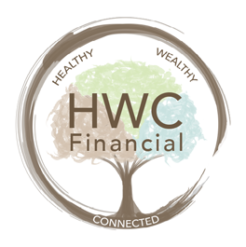The Markets
Zoom, zoom, zoom.
Big economies tend to recover from recessions about as quickly as semi-trucks accelerate from stop lights. In other words, recovery tends to be slow. That may not be the case this time.
“Everything in this economic cycle is happening at great speed. That is in part a reflection of the scale of economic stimulus, and not only from the [Federal Reserve]. One big fiscal package seems set to follow another. A $1.9trn package has barely passed and a $3trn infrastructure bill is mooted,” reported The Economist.
Economic recovery has helped push stock prices higher, and concerns about inflation have pushed bond yields higher. Here are a few highlights from the first quarter of 2021:
Vaccination nation
Vaccine debates pepper small talk. Social media posts feature tips about finding appointments, as well as inoculation selfies and photos of vaccine cards. So far, about 31 percent of Americans have received one dose of a vaccine and 18 percent are fully vaccinated, reported the Centers for Disease Control.
Confident consumers
Vaccine progress, in tandem with stimulus payments and easing business restrictions, helped lift consumer confidence. The Conference Board Consumer Confidence Index® rose from 88.9 in January to 90.4 in February. The March number exceeded even the most optimistic economic forecasts, reported Payne Lubbers of Bloomberg, rising to 109.7.
Jobs, jobs, jobs
In March, the employment report exceeded expectations, too. The U.S. Labor Department reported 916,000 new jobs were created. That was higher than the 675,000 jobs forecast by a Dow Jones survey of economists, reported Jeff Cox of CNBC. Leisure and hospitality sectors, which were hard hit by the pandemic, were job gain leaders in February and March.
An improving rate of job creation was welcome news. By government measures, the unemployment rate was about 6 percent. However, in early March, Treasury Secretary Janet Yellen told PBS News Hour, “We still have an unemployment rate that, if we really measure it properly, taking account of all the four million people who’ve dropped out of the labor force, it’s really running at 10 percent.”
Bond yields rise
For more than a decade, professional money managers have been predicting the end of the 40-year bull market in bonds – and they have been wrong. Since 1981 when rates on 10-year Treasuries were almost 16 percent, Treasury rates have trended lower.
That changed during the first quarter. Alexandra Scaggs of Barron’s reported:
“The Treasury market just posted its worst quarterly performance in more than 40 years, with investors betting on a strong U.S. economic recovery from COVID-19…In theory, the selloff in Treasuries should have left markets that trade at a yield premium to Treasuries, such as corporate debt, in a better position…Yet higher-rated and safer corporate bonds posted losses for the quarter as well, because of their high levels of duration or sensitivity to Treasury yields.”
Stock market boom
During the first quarter, sectors that were unloved in 2020 gained favor. In the Standard & Poor’s (S&P) 500 Index, Energy, Financials, and Industrials delivered double-digit gains, reported Carleton English of Barron’s. Major U.S. stock indices finished the quarter higher.
The stock boom also included tremendous enthusiasm for so-called meme stocks (inexpensive stocks with relatively weak fundamentals) which realized gains because of investors’ enthusiasm rather than intrinsic value, reported Bailey Lipschultz of Bloomberg. The one-year numbers in the scorecard remain noteworthy. They reflect the strong recovery of U.S. stocks from last year’s coronavirus downturn to the present day.

Weekly Focus – Think About It
“Slang is a language that rolls up its sleeves, spits on its hands, and goes to work.”
–Carl Sandburg, American poet, journalist, and editor
Best regards,
Kevin


